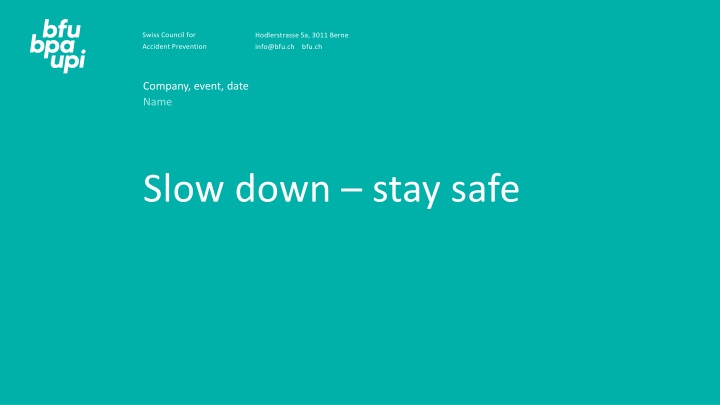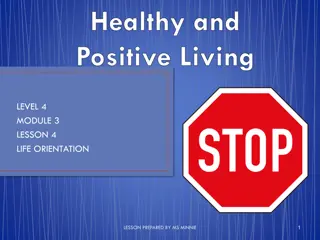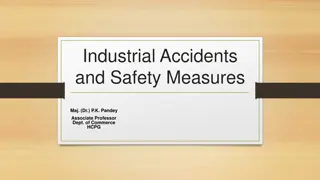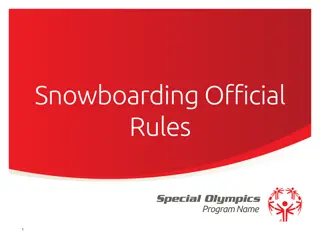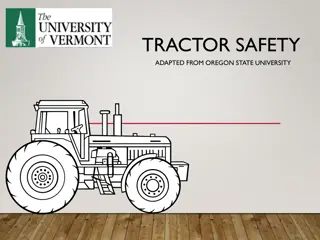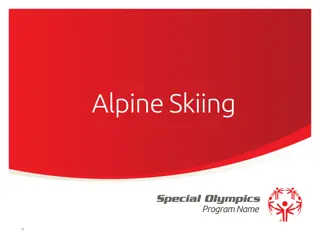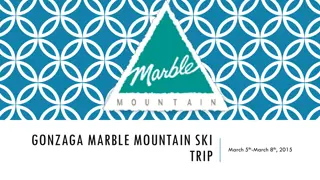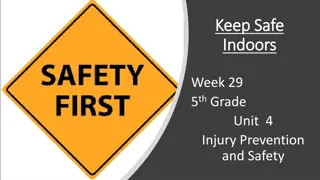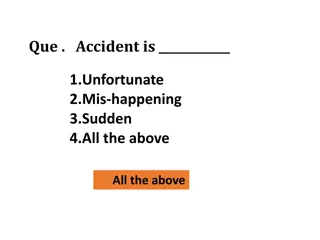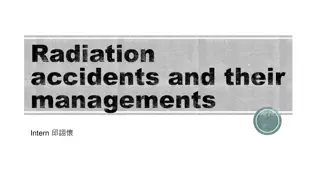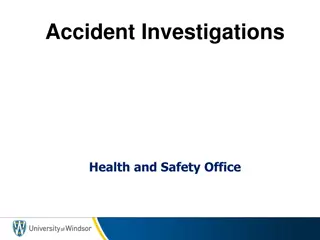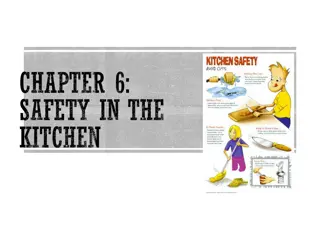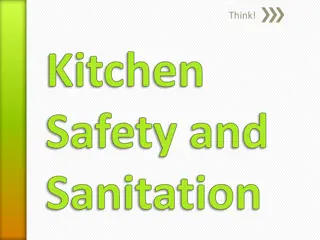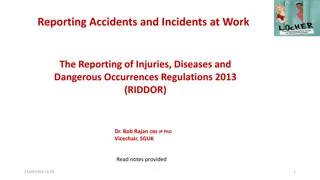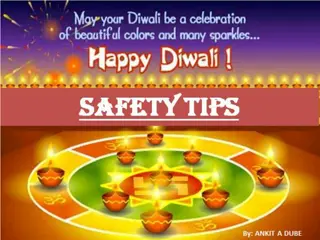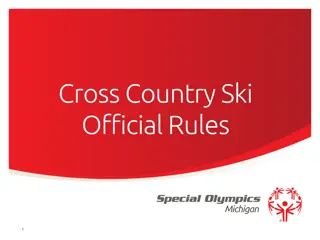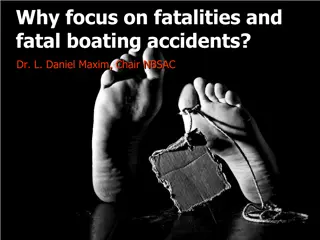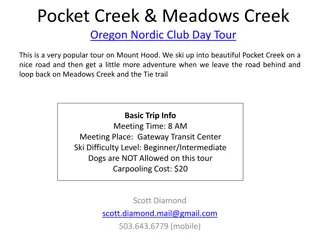Skiing and Snowboarding Safety Tips to Prevent Accidents
Stay safe on the slopes by following these skiing and snowboarding safety tips from the Swiss Council for Accident Prevention. Learn about the common causes of non-occupational accidents in Switzerland, including injuries from various sports. Discover how to reduce your risk of accidents through proper equipment maintenance, skill development, and speed management. Prioritize your safety with proactive measures and preparation for the winter sports season.
Download Presentation

Please find below an Image/Link to download the presentation.
The content on the website is provided AS IS for your information and personal use only. It may not be sold, licensed, or shared on other websites without obtaining consent from the author.If you encounter any issues during the download, it is possible that the publisher has removed the file from their server.
You are allowed to download the files provided on this website for personal or commercial use, subject to the condition that they are used lawfully. All files are the property of their respective owners.
The content on the website is provided AS IS for your information and personal use only. It may not be sold, licensed, or shared on other websites without obtaining consent from the author.
E N D
Presentation Transcript
Swiss Council for Hodlerstrasse 5a, 3011 Berne Accident Prevention info@bfu.ch bfu.ch Company, event, date Name Slow down stay safe
Non-occupational accidents in Switzerland, 2016 Every year, more than one million people are injured on the roads, when doing sport and physical activities as well as in and around the home. 2
Persons injured, by type of sport ( 20122016) Type of sport Persons injured Ball games Winter sports Skiing Snowboarding 135 000 91 000 53 000 12 000 Cycling and skating (not in traffic) 32 000 Gymnastics, athletics 29 000 Mountain sports, hiking 26 000 Water sports 19 000 Other types of sports 81 000 Total: 413 000 3
Over 90 % of all skiing and snowboarding accidents are self- induced. This is why you should think ahead on the slopes, be pro- active and pay attention to the BFU tips. 4
Adapt your speed Skiers and snowboarders are often travelling faster than they think and can quickly reach a speed of 50 km/h. A collision with a stationary obstacle at this speed is comparable to a fall from 10 metres height. Adapt your speed to your ability and the prevailing slope conditions this massively reduces your risk of suffering an accident. 5
Do your pre-season prep Strengthen your trunk and leg muscles with balance- and strength-training exercises. Take a course improve your technique under the supervision of a qualified snowsports instructor. 6
Be properly equipped Skiing Check your skis regularly and keep them properly maintained. Have your ski bindings adjusted every year by a specialist retailer and checked with a testing device. skivignette.bfu.ch 7
Be properly equipped Snowboarding Check your snowboard regularly and keep it properly maintained. Tighten the screws on your snowboard binding and replace defective parts. 8
Be properly equipped Clothing and protective gear Wear warm, weather-proof clothing. Wear a snowsports helmet every sixth accident results in head trauma. Novice snowboarders in particular should also wear wrist protectors. A back guard gives added protection, especially in snow parks. Don t forget your contact lenses or prescription glasses. Wear snow goggles/sunglasses with adequate protection against UV rays. 9
Act responsibly the 10 FIS and 3 SKUS rules of conduct Personal responsibility takes top priority on the slopes. The International Ski Federation FIS has issued 10 binding rules of conduct for snowboarding and skiing: 1. Do not behave in a way that endangers or harms anyone. 2. Be alert and in control. Adapt your speed and manner of skiing to your personal ability and the prevailing terrain conditions. 3. When coming from behind, choose a route that does not endanger skiers or snowboarders ahead. 4. Leave ample space when overtaking. 10
Act responsibly the 10 FIS and 3 SKUS rules of conduct 5. Look up and down the slope before entering a marked run, starting again or moving upwards. 6. Only stop at the edge of the slope or where you can be easily seen. 7. Keep to the edge of the slope when climbing or descending on foot. 8. Respect all signs and markings. 9. In the event of an accident: provide assistance, alert the rescue services. 10. Involved parties and witnesses must provide their names and addresses. 11
Act responsibly the 10 FIS and 3 SKUS rules of conduct Snowboarders: the Swiss Commission for the Prevention of Accidents on Snowsports runs SKUS has issued 3 additional rules: 1. Place your snowboard upside down (binding facing downwards) in the snow. 2. Remove your back leg from the binding when using ski- or chairlifts. 3. With alpine-style bindings, attach your front leg firmly to the board with a safety leash. 12
Freeriding: Safety first off-piste The 5 key tips Deep-snow skiing: use the secured, yellow-marked downhill runs. Take an avalanche training course. Abstain from freeriding when the avalanche risk on the five-level scale is 3 (considerable) or above. Inexperienced? Join a tour led by someone well-versed in avalanche safety. Carry a charged mobile phone and emergency equipment: an avalanche transceiver (rescue beacon), a probe and shovel 14
Further information The following BFU brochures (available in French, German and Italian) contain more on this subject: Skiing and Snowboarding (Art. no. 3.002) Abseits der Piste available in French, German and Italian (Art. no. 3.028) Order them free of charge at bestellen.bfu.ch. You can find even more accident prevention tips at bfu.ch. 16
